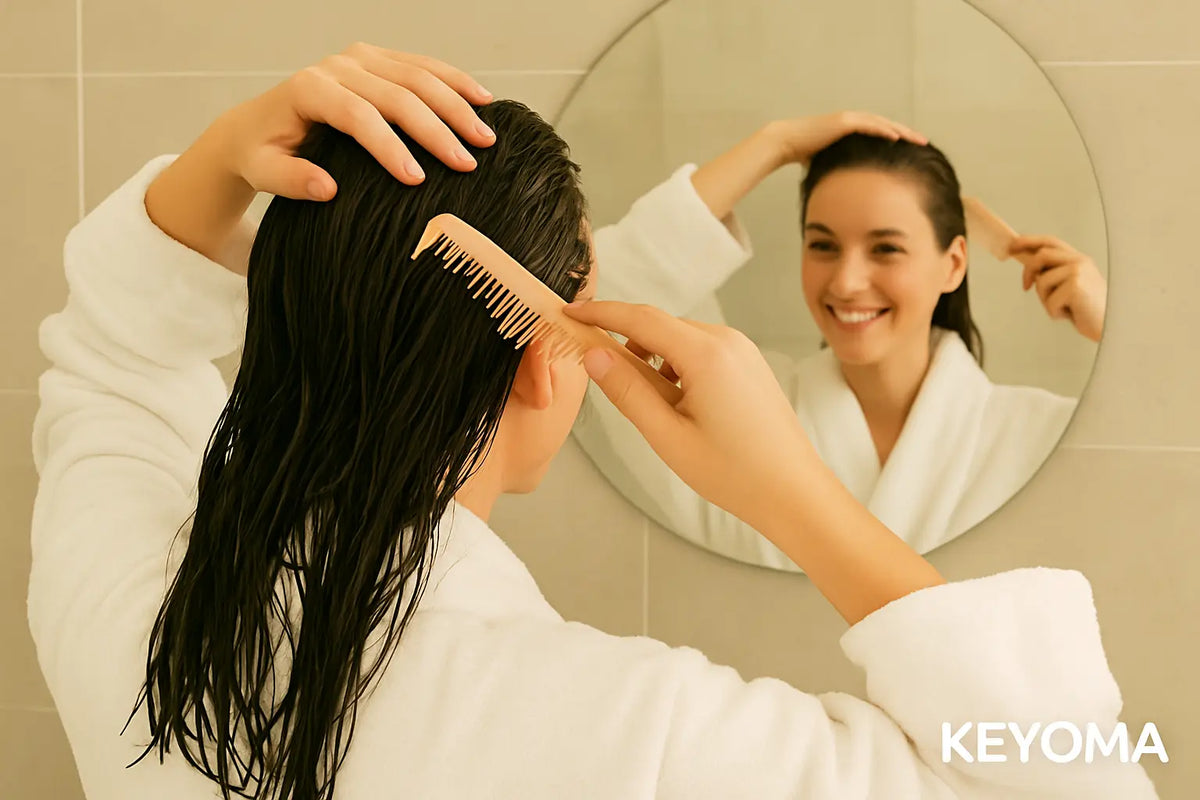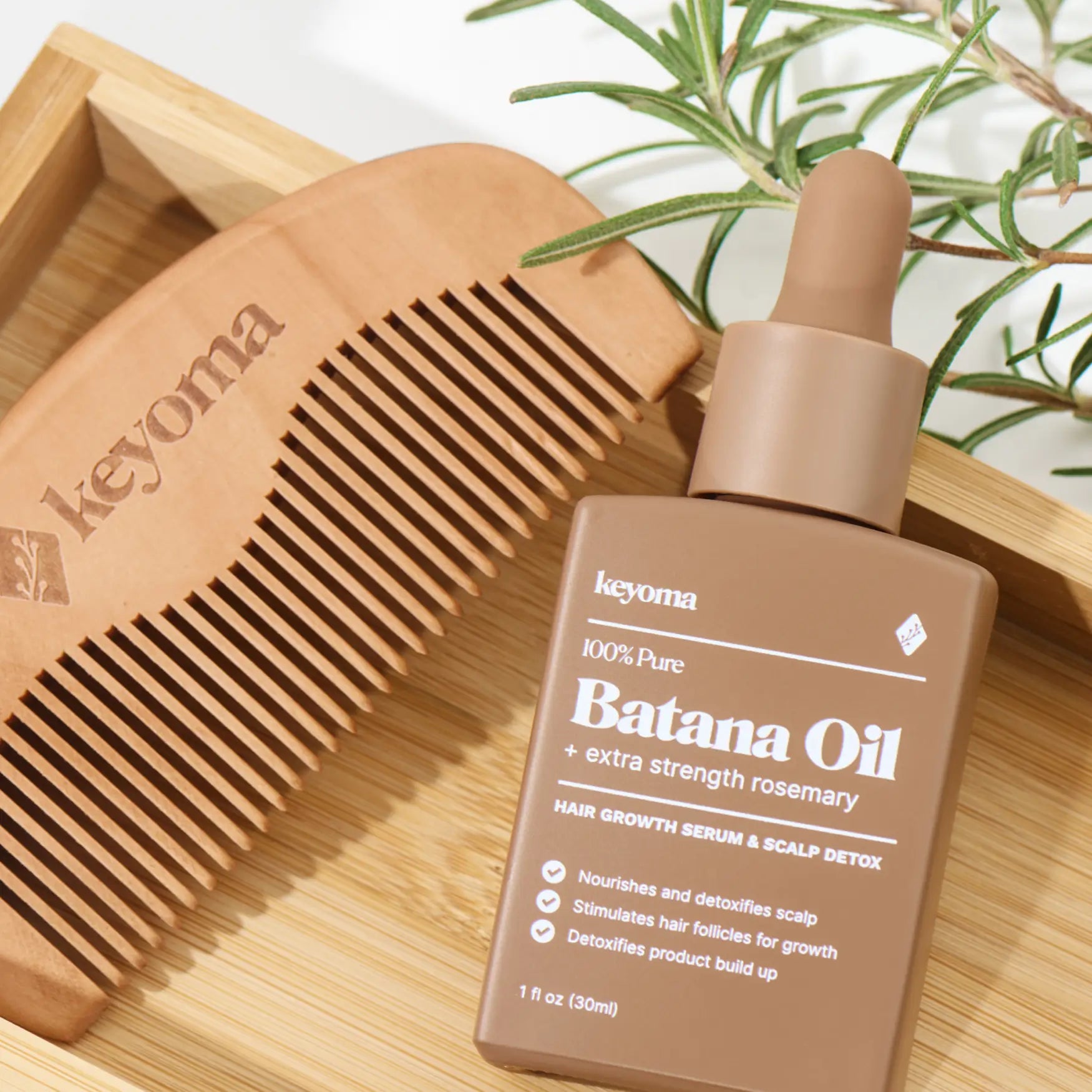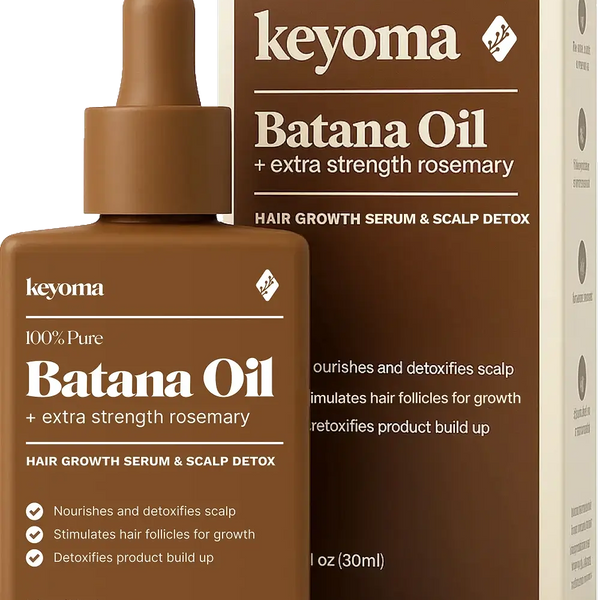In this article
Most of us spend time and money on shampoos, conditioners, or hair styling products, but rarely stop to think about the skin underneath. The problem is, ignoring the scalp while focusing only on the hair is like polishing the leaves of a plant while forgetting to water the soil.
Neglect it, and you risk flakes, itch, thinning, and even long‑term damage. Treat it right, and you create the best foundation for thicker, shinier, healthier hair to grow.
In this guide, we’ll look further into why scalp care matters, the benefits you can expect, and the simple habits that make the biggest difference.
First, What Even is Scalp Care?
Scalp care is the practice of keeping the skin on your head clean, nourished, and balanced so hair can grow from a healthier base.
In the past, it often meant nothing more than grabbing an anti-dandruff shampoo when flakes showed up. But a term that’s come up in recent years—hair skinification—captures how scalp care has evolved.
Today, it means treating your scalp with the same dedication you give your face. Much like a nightly or morning skin routine, it’s about simple but steady steps such as:
-
Cleansing on schedule
-
Exfoliating gently
-
Moisturizing and nourishing (with natural oils or botanicals)
-
Protecting from heat and sun
-
Creating or changing lifestyle habits (e.g. consistent sleep, balanced diet, stress management)
-
Checking for warning signs (e.g. itching, sudden hair loss, etc.)
I've laid out these basics so you can better see the benefits of regular scalp care, which we'll get into next. But later on, we'll get into more specific ways to care for your scalp.
Benefits of Regular Scalp Care
Calms Flakes & Itch
A consistent wash routine helps quiet one of the most common scalp complaints—flakes and itch.
Regular cleansing clears away sweat, oil, and buildup. And when symptoms flare, rotating in a medicated shampoo such as ketoconazole, zinc pyrithione, or selenium sulfide can ease irritation and lower scaling.
The science here points to Malassezia yeast, a fungus that thrives in oily environments and is linked to both dandruff and seborrheic dermatitis. By keeping excess sebum and dead cells in check, scalp care reduces this yeast’s foothold and with it, the itching and flaking that often follow.
Prevents Dandruff
Dandruff ties back to something deeper than just dry scalp. If we were to get a bit surgical, it comes from microbiome dysbiosis—imbalances in the bacteria and yeast that live naturally on the scalp.
When that balance tips, Malassezia yeast often overgrows, sparking flakes and irritation.
Proper scalp care supports this balance. Washing at the right frequency for your hair type clears excess oil and buildup without stripping the skin’s natural barrier.
Improves Hair Thickness
Scalp care, particularly in the form of scalp massage, makes a difference in hair density. A clinical study showed that a standardized daily scalp massage over about 24 weeks increased hair shaft thickness.
And honestly, even without that benefit, I'd say scalp massage is worth it for the relaxing and calming after effect. The feel-good relief itself supports scalp health by lowering the stress hormone cortisol.
That's to say you really can’t go wrong with it, especially when paired with a nourishing oil like Batana. If you want to know more about how to start or even master scalp massaging technique, you can check it out here.
Helps Topical Treatments Work Better
When you need to apply prescription topicals like corticosteroids, retinoids, or medicated oils—whether for psoriasis flare‑ups, eczema patches, or stubborn dandruff—prepping your scalp first makes a difference.
Using keratolytic exfoliants such as salicylic acid, glycolic acid, or urea helps loosen compacted dead cells on the surface. This clears the way for treatments to seep in and penetrate more evenly and effectively.
In other words, you’re making every drop of medicine or nourishing product count by letting it reach the skin beneath rather than just sitting on buildup.
Controls Excess Oil and Odor
Washing at the right frequency for your hair type keeps sebum and sweat from piling up. This stops that greasy film from turning into a breeding ground for yeast and the unpleasant odors that come with it.
That’s why scalp care is especially important for people who spend hours at the gym, run outdoors, or work long shifts under the sun.
Reduces Scalp Acne
Scalp care, like properly washing off residue from styling products or sweat, keeps pores from clogging.
Using non‑comedogenic shampoos and oils helps too, since heavy waxes or thick silicones can block follicles and trigger bumps. In the long run, this steady routine prevents painful pustules or tender breakouts along the hairline, crown, and parting line.
Slows Down Gray Hair
Graying often comes down to two things: pigment cells wearing out over time and oxidative stress speeding that process up. Scalp care helps slow this by keeping the environment around hair follicles healthy.
Scalp massage, for example, improves nutrient and oxygen flow to the follicle. That steady supply supports melanocytes—the cells that give hair its color—so they can keep producing pigment longer.
Of course, it doesn’t stop genetics or aging, but regular scalp care can slow down the process and help preserve natural color for longer.
Boosts Confidence and Mood
When we talk about dandruff and scalp irritation, we often brush it off as just a cosmetic issue. But what it really comes down to in the end is self‑confidence.
Proper scalp care clears away those worries and gives you back that sense of ease. Otherwise, think how awkward it feels to keep scratching your head in front of a date or while speaking at a business presentation.
That lift in confidence naturally feeds into your mood. You feel more at ease in your own skin, with your hair looking healthy and catching the eyes of passersby.
On a chemical level, caring for yourself in this way is linked to higher serotonin and dopamine, and lower cortisol and blood pressure, all of which create a calmer, healthier environment for your scalp
Ways to Care for Your Scalp

The good news about scalp care is that most of it comes down to consistent, simple habits. Some are things you should do (or might already be doing) regularly, while others are about avoiding practices that can quietly harm your scalp. Here’s how to approach both sides:
Best Practices:
-
Use gentle cleansers and hypoallergenic shampoos. Choose mild, fragrance‑free products to clean without irritating the skin, especially if your scalp is sensitive.
-
Moisturize with nourishing oils. Natural oils like batana, argan, or jojoba hydrate the scalp and help prevent dryness often linked to dandruff. Hair oiling has been passed down for generations for this reason.
-
Pair washing with scalp massage. A few minutes of massage improves blood circulation and nutrient delivery. Use clean fingertips or a soft silicone tool, never your nails. Temporary shedding can happen at first as resting hairs release, but this is normal.
-
Brush your hair daily. Gentle brushing spreads natural oils, stimulates circulation, and keeps the scalp fresh. So contrary to popular opinion, it's not just for looks but more importantly for scalp health.
-
Consider light therapy (for psoriasis). Low‑level laser or light devices can complement prescription shampoos and systemic medications in easing scalp psoriasis.
-
Use topical steroids for eczema or seborrheic dermatitis. These come in lotions or medicated shampoos and help calm inflammation and scaling.
-
Adopt healthier lifestyle changes. Oh yes, the good old trinity of overall well being: diet, rest, and exercise. A balanced diet prevents nutrient deficiencies, steady sleep lowers stress, and regular exercise regulates hormones like cortisol and insulin, both of which play a huge role in scalp health.
-
Know when to call a dermatologist. Seek care for sudden bald patches, thick or bleeding plaques, pus, severe itch, scarring hair loss, or widespread scaly bald spots (possible ringworm).
What to Avoid:
-
Avoid comedogenic products. Heavy pomades or waxes near the hairline can clog follicles and trigger acne.
-
Avoid tight hairstyles every day. Constant braids, buns, or ponytails put strain on the follicles and can lead to thinning or even traction alopecia. If you wear braids one day, try a looser bun or simply let your hair down the next day to give your scalp a break.
-
Avoid overwashing. Washing too often, especially on dry scalps, strips away natural oils and worsens irritation. On the other hand, if your scalp tends to get very oily, washing more often may be reasonable.
-
Avoid excessive heat or harsh chemicals. Frequent use of high-heat tools, relaxers, or strong dyes can damage both the scalp and the hair. If your work or routine requires them, follow up with a heat protectant or a soothing, hydrating scalp product to help minimize the damage.
-
Avoid unprotected sun exposure. For balding areas especially, use SPF sprays or wear a hat. This isn’t only about preventing sunburn, nor is it just about avoiding temporary irritation. More importantly, it’s about lowering your long-term risk of skin cancer.
How Do I Know If My Scalp is Healthy?

The most intuitive way to tell if your scalp is healthy is, ironically, by spotting when your hair or scalp shows signs of being unhealthy. Those are easier to notice. In other words, a generally healthy scalp is one that you’ve cared for enough to keep free of these warning signs:
-
Persistent scalp itching and scratching
-
Strong, unpleasant scalp odor
-
Scalp acne (tender bumps along the hairline, forehead, or neck)
-
Raised or painful bumps on the scalp
-
Excessive oiliness
-
Heavy or stubborn dandruff
-
Hair loss (though often genetic, it can also be worsened by scalp issues)
-
Fungal infection patches, redness, or scaling
Scalp Neglect Consequences
It’s easy to shrug off dandruff, itching, or a bit of flaking as “not that serious.” But when those warning signs pile up and you keep ignoring them, your scalp usually only gets worse over time. Here’s what long‑term neglect can lead to:
-
Seborrheic dermatitis: Think of it as dandruff that’s gone from baby bear to papa bear. It happens when Malassezia yeast and excess sebum keep building up, leading to stubborn flakes, redness, and lingering inflammation.
-
Lichenification: Constant irritation can cause the skin to thicken into scaly plaques. Left unchecked, these rough patches may even trigger patchy hair loss.
-
Permanent scarring forms: An untreated fungal infection can grow into a kerion, which is a boggy, pus-filled plaque. Delay treatment too long and the risk of scarring alopecia rises, a form of hair loss that isn’t reversible.
-
Traction alopecia: Daily tight braids, buns, or ponytails put stress on follicles. Over time, this tension weakens and damages them, leading to thinning or even permanent hair loss.
-
Skin cancer risk rises: An unprotected scalp under the sun isn’t just prone to sunburn. Without SPF or a hat, you increase the risk of skin cancers on the scalp, which are notoriously harder to detect and treat early.
Frequently Asked Questions
How do I know if my scalp is unhealthy?
You’ll usually know your scalp is unhealthy when it shows warning signs like persistent itching, flakes that don’t go away, redness, painful bumps, or even sudden hair shedding. All these issues point to an imbalance that often stem from excess oil, product buildup, or inflammation.
How often should I exfoliate my scalp?
For most people, once a week is enough. If your scalp is oily, you might exfoliate twice a week. Sensitive scalps usually do better with less, about once every two weeks.
Be careful not to over-exfoliate, since that can cause irritation. Always pair exfoliation with gentle cleansers and nourishing oils to keep your scalp barrier healthy.
Is dandruff contagious?
No, dandruff isn’t contagious and, thus, can't be "passed on" to others. It’s triggered by an overgrowth of Malassezia yeast, something that already lives on everyone’s scalp. Flaking happens when the scalp reacts to that overgrowth.
Proper scalp care, like rotating antifungal shampoos and staying consistent with washing keeps dandruff issues manageable.
Scalp Care is More Than Just Looks!
At the end of the day, scalp care matters not only for the cosmetic perks like shinier, fuller hair, but also for how confident you feel. When your scalp is comfortable and clear, you’re more at ease in social or professional settings. And that confidence shows.
We’ve covered a range of routines here, from cleansing and exfoliating to lifestyle shifts. Still, one of the quickest and easiest ways to begin is by working in a few drops of nourishing oil during a simple scalp massage.
That said, always pay attention to your condition. If you notice persistent itching, flaking, or pain, don’t brush it off. That’s the time to check in with a professional.
And if you’d like more free tips, from practical care routines to clean product picks and lifestyle practices, be sure to browse the Keyoma Blog.
Featured Product
100% Pure Batana Oil + Rosemary









